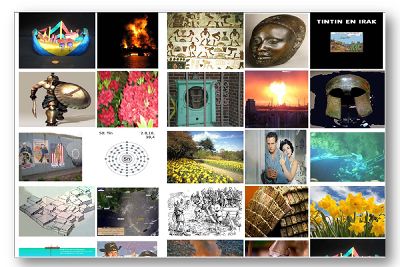The 2015 Fukushima Pinup Calendar
*The 2015 Fukushima Pinup Calendar* is part of my ongoing project Tin Towns and Other Excel Fictions. It adds another data point to *The Good Fortune Land* - a collection of Excel spread sheets that tell one part of the story of the ongoing Fukushima Daiichi Nuclear Plant disaster. Of course, we have moved past 2015, but this Calendar is intended as a vivid reminder of the history of the then-four-year attempt to pretty up the picture. It was also a useful calendar online or printed, for home or office for that year. It consists, of course, of the twelve months of the year – each month commemorating one of the extant issues surrounding the “control” of the plant and its surrounding water and land. In the spaces for each day, data from 2011, 2012, 2013, and 2014 is recalled – along with the important holidays!
by M.D. Coverley
*The
2015 Fukushima Pinup Calendar* is
not a comprehensive account of the Fukushima Triple Melt-Through.
Rather, since the disaster is
relatively complicated, the figures inconsistent, and news reports
fragmentary and conflicting, I approached the subject with some specific
(in a sense, artistic – since all art and literature involves
limitation) constraints.
Having closely followed reports from
the few sources that have been covering Fukushima since the disaster – sources including TEPCO itself, the Daily Yomuri, Asahi News,
Fukushima Diary, ENEnews, NHK World, Physics Forum, and others – I found
I had collected hundreds of articles – and had access to many more
through news archives.
What sense to be made of all of this
(?) especially since this affair will be ongoing for hundreds of years!
I decided to choose one
theme for each month of the year (the explosions, the land
contamination, the health effects) and in the day/spaces for that month to include only articles on that particular subject.
June,
for example, is the month for Water – and the problems relating to the
radioactive water leaks from Fukushima.
Surprisingly, choosing only the articles published between
June
2011 and through successive Junes until 2014, I had more than enough headlines to fill the
boxes.
The
Calendar, then, is an
impressionistic look at a continuing narrative – the end of which is
unknown. . . .
What does emerge, I believe, is a sense of what
happens to information/storyline (disaster narrative, if you wish) –
when input is scattered, confusing, and extended over long time
intervals.

Background on Tin Towns and Other Excel Fictions:
We normally think of fiction
narratives as represented in linear text.
Yet,
electronic literature works – the born digital varieties - have been
created with and contained in a
range of innovative and often non-linear applications.
*Tin
Towns and Other Excel Fictions* experiments with making fiction using
spreadsheets and other Excel templates.
The content of each “metastory” is
necessarily shaped by the architecture of each specific application.
The basic spreadsheet layout
allowed a compression of both time and space into formulae, but other
useful formats were also available.
As the
project builds, I am using
budget makers, billing statements, yearly and
perpetual calendars, expense reports, blood pressure trackers, loan
amortizations, tinkle potty charts, nursing schedule charts, party
planners, memos, display booth diagrams, schedules, breakeven
interactive charts, and time sheets.
I am
not wedded to correct application or function of the apps – they are a
way of framing and commenting on the fact that, for all the
quantification
of our economy (as a way of
understanding the world), many important elements may not be factored
in.
This project is a suite
of stories that gather a set of “data points” reflecting intersections
in technology, history, economics, and memory that tell a tale of human
behavior and unexpected loss.
*Tin Towns and Other Excel Fictions*
contains works about mega-events that include historical periods from
the collapse of the Bronze Age to the 9-11 and the Fukushima Nuclear
Power Plant disaster.
In looking at the reconfigured data
for these events, we begin to explore how our narratives of
understanding (or misunderstanding) are assembled.
*
